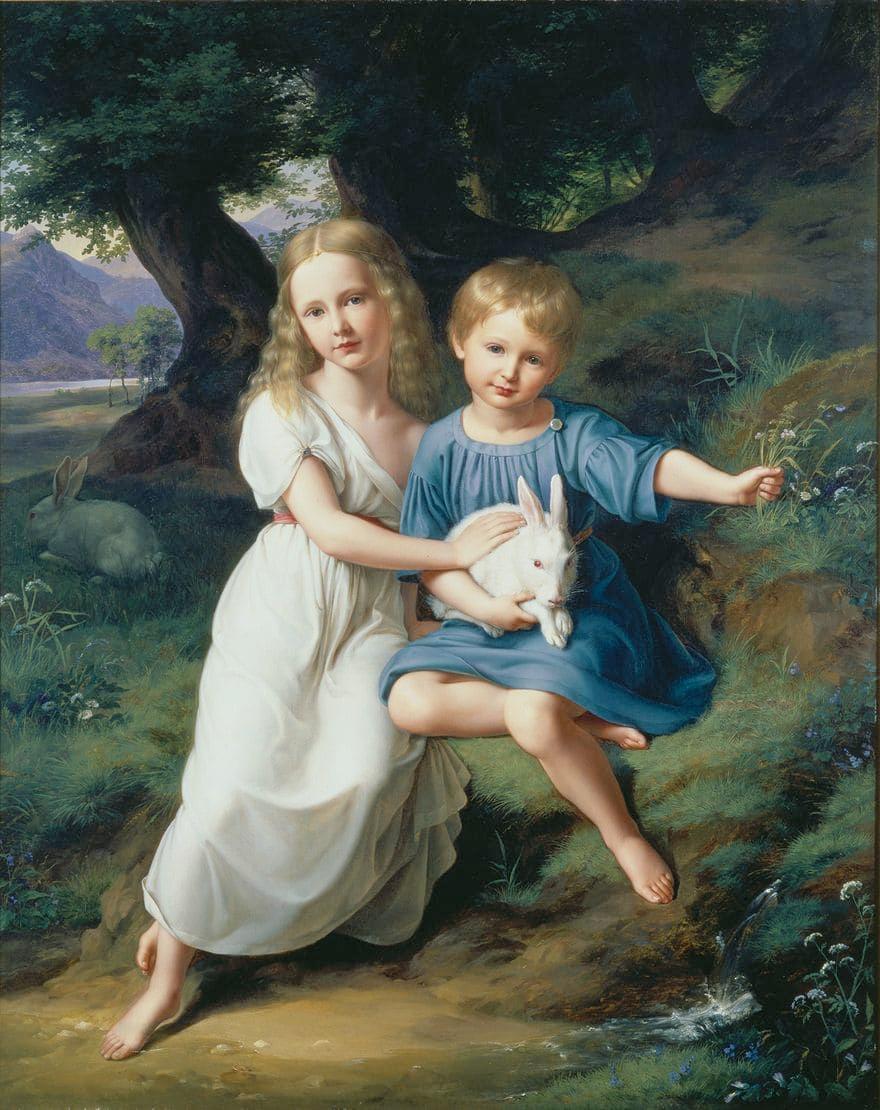
The city of Düsseldorf has reached an agreement with the heirs of Max Stern, a Jewish art dealer forced to flee Nazi Germany in the 1930s, ending a years-long battle over a painting with a disputed provenance.
The artwork, Wilhelm von Schadow’s 1830 family portrait The Artist’s Children, has been owned by the city of Düsseldorf for more than six decades. But in recent years, the late dealer’s foundation has attempted to lay claim to it, contending that Stern was forced to sell the painting under duress.
As part of the new agreement, Düsseldorf will restitute von Schadow’s artwork to the Dr. Max and Iris Stern Foundation on the condition that the city can immediately buy it back. The terms of the settlement, including how much the city paid to re-acquire the artwork, were not disclosed, according to The Art Newspaper, which first reported the deal.
In a statement, Düsseldorf mayor Stephan Keller said that he was pleased with the “fair and just solution” between the parties and that von Schadow’s artwork “will remain in Düsseldorf.” He added that the painting will go on view at the city’s Museum Kunstpalast starting in August of this year.
Stern took over Galerie Stern, the Düsseldorf-based business founded by his father, in 1934. By order of the Nazi government, he was forced to close the gallery in 1937, at which point the artworks in his holdings were confiscated or sold at auction.
A single suitcase in hand, Stern fled to London and was initially interned at a refugee camp. Eventually, the country allowed him to immigrate to Montreal, where he settled and worked as a director at Dominion Gallery of Fine Art. In 1947, Stern and his wife became the sole owners of the gallery and quickly developed a reputation for showing the work of young Canadian artists.
After the war, the dealer attempted to track down the artworks that had been confiscated from him in Germany, but his efforts were largely unsuccessful. Stern died in 1987, at which point his holdings were transferred to Concordia University and McGill University in Montreal, as well as Hebrew University in Jerusalem.
The three schools later founded the Max Stern Art Restitution Project to reclaim the estimated 400 artworks lost during the 1930s. To date, the project has recovered 24 pieces, including paintings by Otto Erdmann, Nicolas Neufchatel, and Jan Brueghel the Elder.
The case of von Schadow’s The Artist’s Children proved to be particularly complicated due to questions of provenance.
The city of Düsseldorf acquired the portrait in 1959, and it was hung in the office of the city’s mayor. When the Stern Foundation filed a claim for the artwork years later, it pointed out that, in 1937, Galerie Stern allowed for the piece to be reproduced in a book about paintings of children. But Düsseldorf city officials pushed back, arguing that the book did not prove the gallery owned the artwork at that point. There was no evidence of the painting being surrendered under Nazi persecution, the city contended.
The city’s stance apparently softened in recent years.
“We couldn’t prove that it was not a restitution case, so we as the city government recommended to the assembly that it should be restituted,” Miriam Koch, the Düsseldorf city official in charge of culture, told The Art Newspaper. “The big parties in the city council supported restitution.”